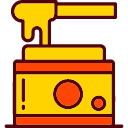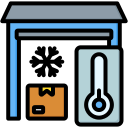Trend Lines: Definition, Importance and How To Draw It?
A valid trendline needs at least two major swing points, though three points prove its reliability. Quality trendlines link major swing points instead of minor fluctuations. The trendline’s strength grows each time price tests it without breaking. Trendlines are bounding lines that link price points on a chart and highlight key support and resistance levels. In general, trend lines need adjusting when fresh price information cancels out the previous trend or when important market happenings hint at changing the course of that trend.
In technical analysis, trend lines are a fundamental tool that traders and analysts use to identify and anticipate the general pattern of price movement in a market. Essentially, they represent a visual depiction of support and resistance levels in any time frame. Channels are two parallel trend lines that form a trading range, indicating a range-bound market with clear support and resistance levels. A channel is used to identify potential entry and exit points for trades.
Regret Theory: Understand How it Affects Your Trading Decisions
- Using trendlines with other technical indicators can improve accuracy.
- The use of trend lines to recognize support and resistance assists traders in locating proper spots for entering and exiting, improving their comprehension of market movements.
- Even though trend lines offer a straightforward way to comprehend market movements, they should not be applied alone.
- However, this would have only been a two-point trend line because the May–June highs are too close together (black arrows).
- Trend lines are an essential tool used in charting and technical analysis.
Even though trend lines offer a straightforward way to comprehend market movements, they should not be applied alone. Adding them with other indicators improves trustworthiness of the analysis and helps lessen risks linked to their subjective characteristic. Trading channels are made by two trend lines that run along with price movements.
CFDs across Foreign Exchange, Metals, Commodity and Stock markets around the globe
It’s the point at which selling pressure becomes sufficiently intense to prevent the price from rising further. In the case of trendlines, the resistance is taken at the slanting price points represented by drawn trendlines. Trendlines are custom lines drawn on price charts to connect a sequence of prices to get a likelihood of future trajectory of price. Trend lines are most commonly used in price charts to make it easier for traders to analyze a trend. A trendline is drawn above pivot highs (Sequence of proper higher lows) or below pivot lows (sequence of proper lower highs) to indicate the predominant price direction.
Understanding these lines allows you to anticipate future price movements. To use trendlines effectively, connect the highs during a downtrend and the lows during an uptrend. This approach allows you to identify potential entry points for trend-following trades and signals for potential trend reversals when the trendline breaks. Apple’s stock perfectly exemplifies trendline application in equity markets. The stock showed clear trendline support during its upward trajectory from 2016 to 2023.
By using trendlines to identify key points, traders can develop trading strategies with clear entry and exit points. Ascending trend lines are a type of uptrend line that with a positive slope signifies an uptrend, where buying pressure pushes prices higher, creating higher lows along the trendline. The uptrend lines are drawn by connecting points along the lower end of the chart, highlighting the series of higher lows, which serve as support levels.
Multiple timeframe analysis improves trendline trading by providing broader context. Start by identifying major trends on higher timeframes (e.g., daily charts) and then use lower timeframes (e.g., hourly or 15-minute charts) for precise entry points. When trendlines align across multiple timeframes, it increases the probability of successful trades. These examples prove trendlines are great tools to identify potential entry points, profit targets, and stop-loss levels in assets of all types. Downtrend lines need two or more significant high points where each new high falls below the previous one.
Trend Lines
Our online customer service system is currently experiencing connection issues. We are working actively to resolve the problem, but at this time we cannot provide an exact recovery timeline. Stay informed with Strike’s guide on in-depth stock market topic exploration. This means that for every one-year increase in time, we expect sales to increase by 2.85 million dollars. Statistics or past performance is not a guarantee of the future performance of the particular product you are considering. This equation can now be used to predict future sales based on the trend line.
Descending trend lines are a type of negative slope trend line that indicates where selling pressure drives prices lower and creates lower highs along the downtrend line. The negative slope is drawn by connecting price points along the upper end of the chart, highlighting the series of lower highs, stock market crashes which serve as resistance levels. A downtrend line offers traders insights into the market’s bearish sentiment.
Each type of trend line has its own advantages and disadvantages and is ideally suited for a distinct set of data. It is essential to select the appropriate type of trend line according to the characteristics of the data being analyzed. No, such a line can be curved, for example, the polynomial trend line. Besides knowing the different trend line types, one must be familiar with its graph to understand the concept. Let us look at this Som Distilleries & Breweries Limited chart to understand the concept better.
- Lines that extend infinitely forward without adapting to changing market conditions lead to poor decisions.
- Traders often watch volume patterns when Bitcoin tests a significant trendline to confirm if support or resistance will hold.
- The trendline has continued to act as a resistance and provided multiple trading opportunities.
- The asset breaking through the trend line and moving in the opposite direction may indicate that the trend has changed or that the trend line was inaccurate.
Though, the accuracy of the trendline is directly proportional to higher time frames. We will connect the highs or lows of the stock’s price movement to create a trend line. The long-term trend line for the S&P 500 ($SPX) extends up from the end of 1994 and passes through low points in July 1996, September 1998, and October 1998. These lows were formed with selling culminations and represented extreme price movements that protruded beneath the trend line. By drawing the trend line through the lows, the line appears at a reasonable angle, and the other lows match up well.
What are the Different Scale Settings for Trend Lines?
High and low points appear to line up better for trend lines when prices are displayed using a semi-log scale. This is especially true when long-term trend lines are being drawn or when there is a large change in price. Most charting programs allow users to set the scale as arithmetic or semi-log. An arithmetic scale displays incremental values (5,10,15,20,25,30) evenly as they move up the y-axis.
Practical Application: How to Utilize Trend Lines in Trading
For instance, if the market shifts from a range-bound to a trending market, a trader needs to adjust their trendlines to match the new market conditions. By adjusting the trendlines over time, traders can avoid making trading decisions based on outdated or irrelevant trendlines. Additionally, traders can use other technical indicators, such as moving averages and oscillators, to confirm the trendline’s validity and improve the accuracy of their trading decisions. By following these best practices, traders can use trendlines effectively in technical analysis and develop profitable trading strategies.
If one or two points were ignored, you could form a fitted trend line. But with market volatility, prices can overreact and produce spikes that distort the highs and lows. One method for dealing with over-reactions is to draw internal trend lines, which ignore these price spikes to a reasonable degree. Uptrend lines act as support and indicate that net demand (demand less supply) is increasing even as the price rises. A rising price combined with increasing demand is very bullish and shows a strong determination on the part of the buyers.
Trendlines can be used with stop-loss and take-profit orders to manage risk and maximize profit potential. In an uptrend, traders can place a stop-loss order below the trendline to limit their potential losses if the trend reverses. Take-profit orders can be placed at a predetermined level above the trendline, which provides a clear profit target. In a downtrend, traders can place a stop-loss order above the trendline and a take-profit order at a predetermined level below the trendline. By using trendlines with stop-loss and take-profit orders, traders can manage their risk and maximize their profit potential.
Trendlines — one of the favorite and most commonly used tools by traders. It allows users to explore market trends and psychology in many ways across different time frames. But how to read a trendline, why are they important, how to use it in investing, and are they a reliable tool? Therefore, we have loaded this blog with all the answers using plenty of examples.



 Grains & Pulses
Grains & Pulses Organic Produce
Organic Produce Spices & Condiments
Spices & Condiments Fresh Herbs
Fresh Herbs
 Fresh Fruits
Fresh Fruits Fresh Vegetables
Fresh Vegetables Exotic Produce
Exotic Produce Seasonal Specials
Seasonal Specials
 Groundnut Seeds
Groundnut Seeds Mustard Seeds
Mustard Seeds Sesame Seeds
Sesame Seeds Sunflower Seeds
Sunflower Seeds
 Fresh Fish
Fresh Fish Frozen Fish
Frozen Fish Crab & Lobster
Crab & Lobster Prawns & Shrimps
Prawns & Shrimps
 Bath & Body
Bath & Body Skincare
Skincare Haircare
Haircare Oral Care
Oral Care
 Flavored Honey
Flavored Honey Honey Syrups
Honey Syrups Organic Honey
Organic Honey Raw Honey
Raw Honey
 Cornflakes
Cornflakes Millet Mixes
Millet Mixes Oats & Muesli
Oats & Muesli Granola
Granola
 Mini Tractors
Mini Tractors Harvesting Tools
Harvesting Tools Power Tillers
Power Tillers Sprayers & Pumps
Sprayers & Pumps
 Chemical Fertilizers
Chemical Fertilizers Pesticides
Pesticides Organic Fertilizers
Organic Fertilizers Herbicides
Herbicides
 Farm Tools
Farm Tools Irrigation Equipment
Irrigation Equipment Threshers
Threshers
 Packaging Machines
Packaging Machines Cold Storage Units
Cold Storage Units Food Processing Machines
Food Processing Machines Grinding & Milling Machines
Grinding & Milling Machines
 Baby Food
Baby Food Baby Skincare
Baby Skincare Diapers & Wipes
Diapers & Wipes Toys & Accessories
Toys & Accessories
 Cattle Feed
Cattle Feed Fish Feed
Fish Feed Pet Food
Pet Food Poultry Feed
Poultry Feed
 Frozen Chicken
Frozen Chicken Ham & Bacon
Ham & Bacon Meat Snacks
Meat Snacks Sausages
Sausages
 Bakery Products
Bakery Products Beverages (Juices, Soft Drinks)
Beverages (Juices, Soft Drinks) Packaged Snacks
Packaged Snacks Ready-to-Eat Foods
Ready-to-Eat Foods
 Biofuels
Biofuels Energy Storage Batteries
Energy Storage Batteries Solar Panels
Solar Panels Wind Energy Equipment
Wind Energy Equipment







